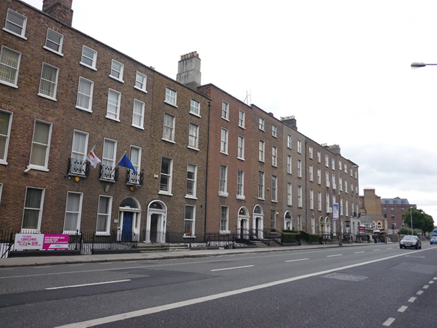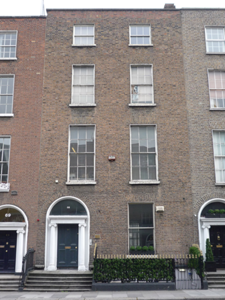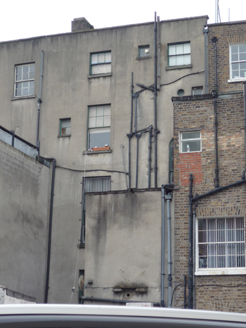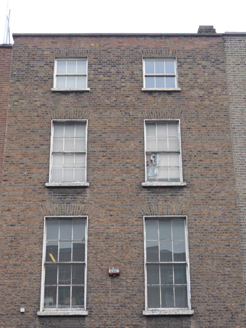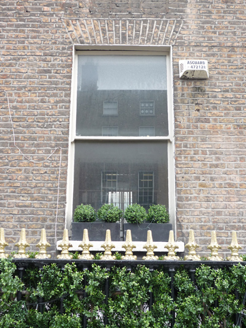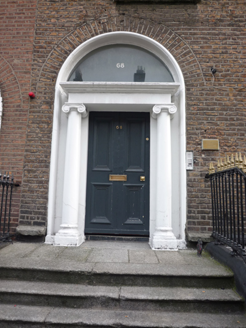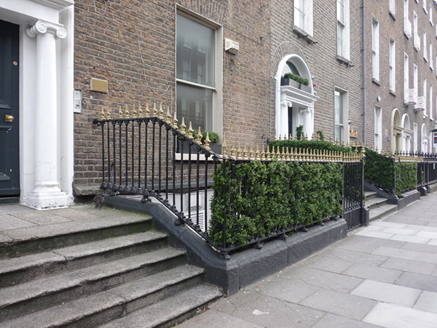Survey Data
Reg No
50930254
Rating
Regional
Categories of Special Interest
Architectural, Artistic
Original Use
House
In Use As
Office
Date
1820 - 1840
Coordinates
316340, 232909
Date Recorded
20/10/2015
Date Updated
--/--/--
Description
Terraced two-bay four-storey over basement former townhouse, built c. 1830, with flat-roofed two-storey return to rear (north) elevation. Now in use as offices. M-profile roof, hipped to west end, concealed by refaced brick parapet with masonry coping, brick chimneystacks to east party wall without pots. Parapet gutters with uPVC hoppers and downpipes to rear (north). Brown brick walling laid in Flemish bond, rendered walling to basement beneath granite plinth course. Rendered walling to rear (north) elevation. Square-headed window openings with brick voussoirs, patent reveals and granite sills. Single round-headed window and diminutive oculus to rear. Plain rendered surrounds to basement (window appears to be block and vent inserted) and rear openings. Largely six-over-six sliding timber sash windows with convex horns to first and second floor, one-over-one and three-over-three replacements to ground and third floors (respectively). Multi-paned sashes to rear with convex horns, some timber casements to upper floors. Round-headed door opening to principal elevation (south) with brick voussoirs, moulded reveals with recessed doorcase having prostyle Ionic portico with moulded cornice and plain frieze over Ionic columns, plain glass fanlight and timber panelled door with beaded-muntin. Granite entrance platform with cast-iron boot scraper, approached by five nosed granite steps, flanked by iron railings with decorative finials over granite plinth, enclosing basement area. Enclosed yard to rear, bound by modernised two-storey mews building onto Leeson Close.
Appraisal
Despite the loss of some historic fabric, this former townhouse forms part of a relatively intact terraced row. Nos. 67-9 (50930253-5) were likely built by Thomas Dockerell, who leased the sites from the Hon. Sidney Herbert. (Casey, 2005)Although the street is largely characterised by typical late-Georgian townhouses, the variations in detailing, proportions and scale are indicative of the speculative nature of development. Nos. 63-9 (50930253-9) proceeded those to the west and are subsequently grander in scale, defined by higher floor levels and larger window openings. The main route from St. Stephen’s Green to Donnybrook, Leeson Street remained largely undeveloped until the late-eighteenth century and was almost entirely complete by 1836.
